Thanks for voting! I held a poll on my FB and Instagram pages, to help me decide which books to review next, since I have quite a few lined up and I just couldn’t decide. Turns out that this came out tops! No wonder, as it is the latest book by Yukari Nakano – the author of Sewing Couturier Class books (read the previous two book reviews here – Daily wear for Ladies and Good Clothes for Ladies) This book was actually released last October but I only bought it a few months ago. She has a new book coming out in August and I will be sure to get that as soon as I can!
The title is loosely translated to – Japanese Easy Fashionable Ladies Wear to make. You can see the words “Easy Sewing” on the top. The patterns included are all easy to make, with few pattern pieces and easy finishes. No zips/buttons!

There are 6 basic patterns, from which 27 different variations can be made. Sizes included – S,M,L. There are 4 pattern sheets included.
The 6 basic patterns are namely,
A – Gathered Skirt
B – Tight Skirt
C – Gaucho Pants
D – Bottle neck Dress
E – Drop Shoulder Dress
F – Margaret (it’s like a kind of wrap/stole/cardigan thingy?)
The first project is a Gathered Skirt, and the basic version is as simple as can be. No pattern tracing required even! Just two rectangles and an elastic waistband. A fully detailed sewing lesson, complete with step by step photographs is available for this project. It is a great project for beginners and a real confidence booster as well.
Once you have mastered the basic gathered skirt, you can move on to make more interesting ones like this one above which has the fabric cut on the bias.
Or this reversible skirt with lace and cotton lawn.
The next basic design B – is a tight skirt. It is quite similar to the gathered skirt in the construction, 2 pieces of fabrics and an elastic waistband. The variations include side pockets, back pockets and back slits. However, do note that in order to achieve a tight skirt without a zip/opening, the skirts are all made of knit/jersey material. The designer used different types of knit – acrylic knit, wool knit, polyester stretch, for the different skirts to make it simple to sew but fitting to the body.
HOWEVER, just a warning if you are a beginner. I was looking for notes on how to sew on knit material, since it is quite different from sewing wovens/non-stretch fabrics), but there was none! Sewing with knits is slightly different from sewing with wovens. It is not as scary as some make it out to be, but it does require different needles, knowing the right stitches to use, and also some practice before you can make it look as good as it does in the book.
If you already know how to sew with knits with either a serger or a sewing machine, then I think these patterns are quite nice and simple to use and also perfectly wearable. But like I said, if you are just starting out, you may find it frustrating if you try to sew it the same way as wovens. You may find your stitches popping out after a while because they are not meant to stretch.
The next pattern is for Gaucho pants. Now I’m not a big fan of this look, hence I’ve only got one picture here. You can see the rest of the variations from the book flip-through below. But basically the variations are in materials and pockets/sash belt details. There are no length variations. 3 out of the 4 variations call for stretch fabric, but I have a feeling this can be done in wovens as well, it does look rather spacious and loose-fitting (unless it’s only because the model is so skinny?)
Pattern D is a Bottleneck Dress. I think from the picture above it is quite easy to tell what is meant by bottleneck dress. As you can see the neck hole is very small, and guess what, there are no zips/buttons too, which makes it a easy sew. However, the only way for the head to get in and out of the dress is if…. the dress was made of knit fabric so that it will stretch. So the same problem applies to this set of patterns as the tight skirt. You need to learn/know how to sew with knits and the book doesn’t tell you how.
I did, however, find a small picture in one of the how-to-make sections for this particular dress (above), recommending some stretch thread and stretch needles that will go best with the wool knit. But it’s just a small picture and easily missed.
This is the bottleneck top as shown on the cover of the book, it is just a shorter variation of the bottleneck dress but with a belt sash.
Pattern E is for a dropped shoulder dress. This is an easy sew with no zips/buttons too, and the neck hole is large enough to pull it over, so you can use wovens for this. This is probably the most interesting piece as there are length variations – long (Dress), short (top), with sleeve length variations as well.
I like this one which uses cotton lace/eyelet for the sleeves and plain white fabric.
The last pattern is a margaret. I don’t know if this is the official English name for it but this is how it is spelled in the book. It is like a long rectangular piece of fabric with parts of the short ends sewn up, leaving holes for the arms to go through. It’s like a coverup/cardigan. The variations in the book are mainly combinations of different fabric. Wool knits are used here as well, but as the garment is loose and does not really require stretching of the fabric to get in and out of, I think it is possible to use normal stitches here.
Some ideas for styling using the pieces made in the book.
There are two sewing lessons in the book. The first is the gathered skirt, and the second is the drop shoulder dress.

A close up of the instructions.
Most of the patterns’ how-to-make are in the above format. It is rather simple compared to a lot of other books I have used. But as mentioned before, this book is all about simple patterns with very simple techniques. Most of which are covered within the 2 detailed sewing lessons. Also, as many of the patterns are variations, there will be references to the main pattern or other similar patterns, like the top above, steps 1-5 is based on the main pattern’s instructions on pg 37-39.
and here’s the book flip-through video!
Title : 日本一簡単に おしゃれな大人服が作れる本
Translated : Easy to make Fashionable Ladies Wear
Author :中野ユカリ Yukari Nakano
ISBN No. : 978-4800249371

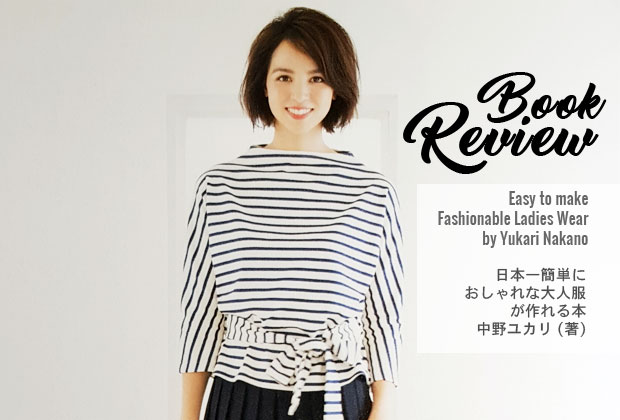

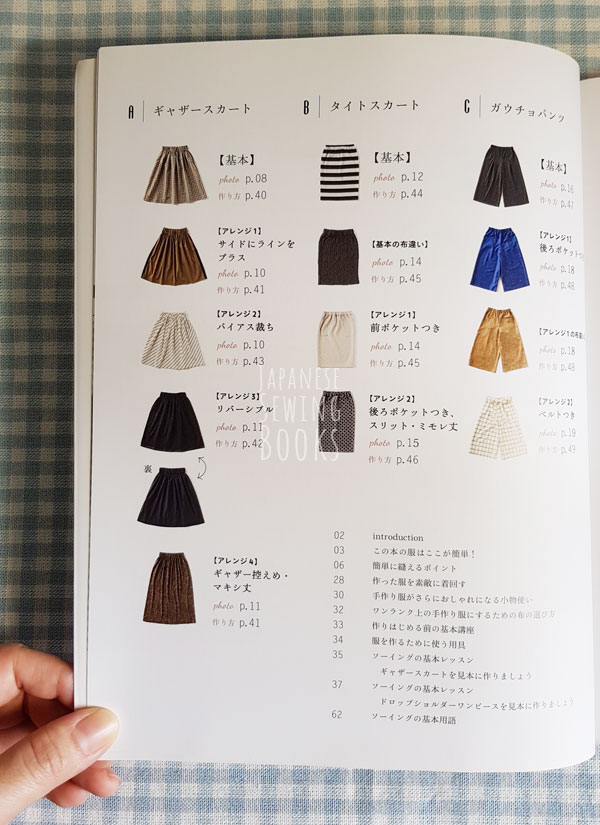




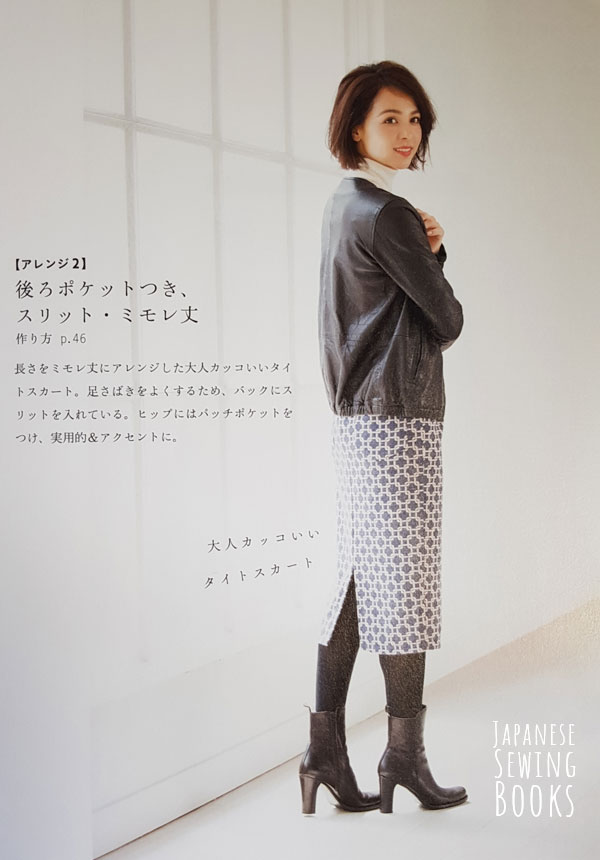
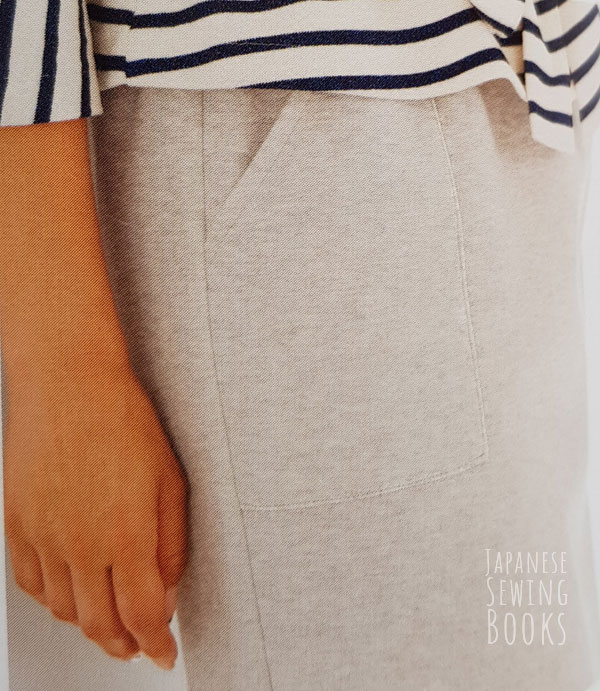
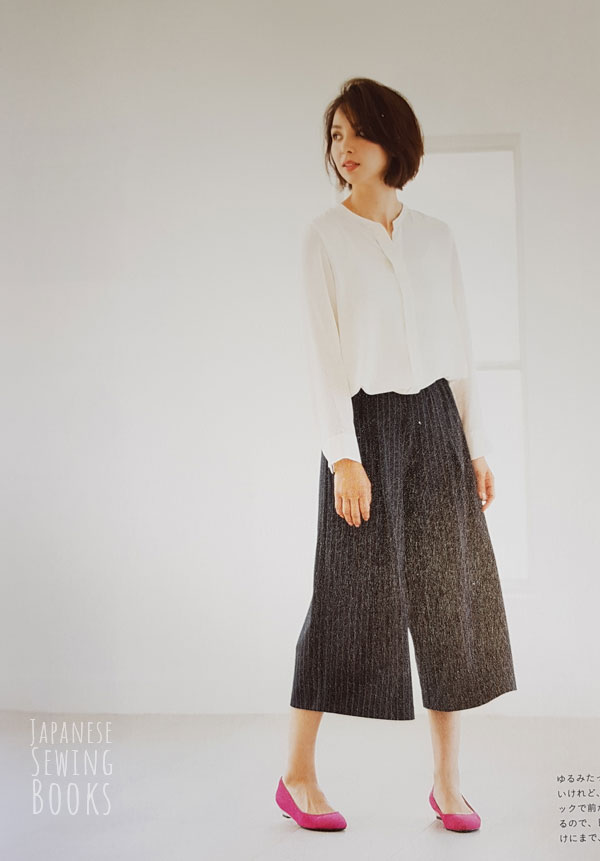
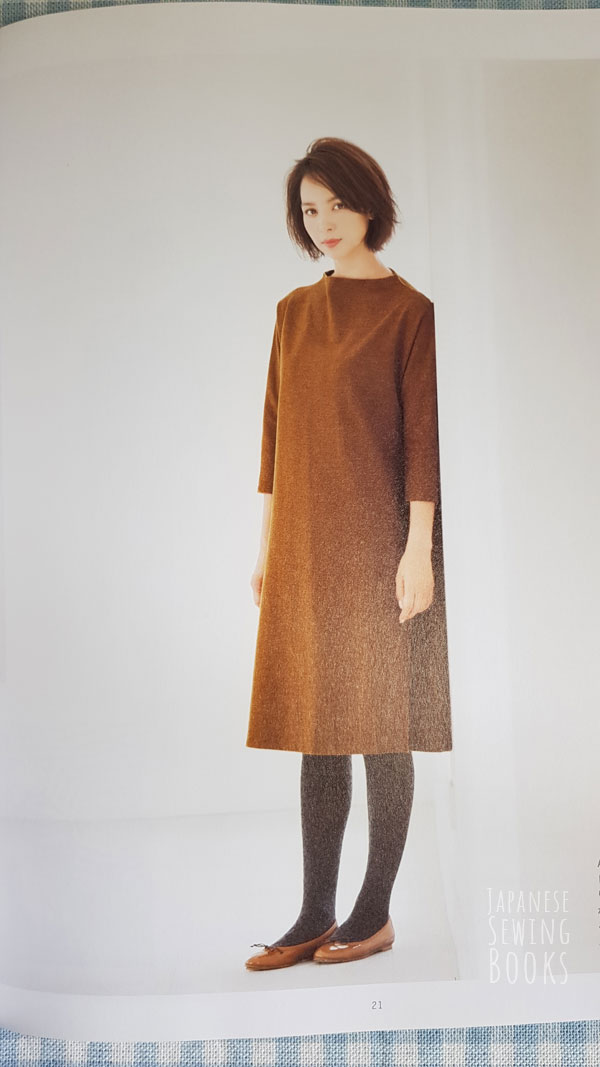
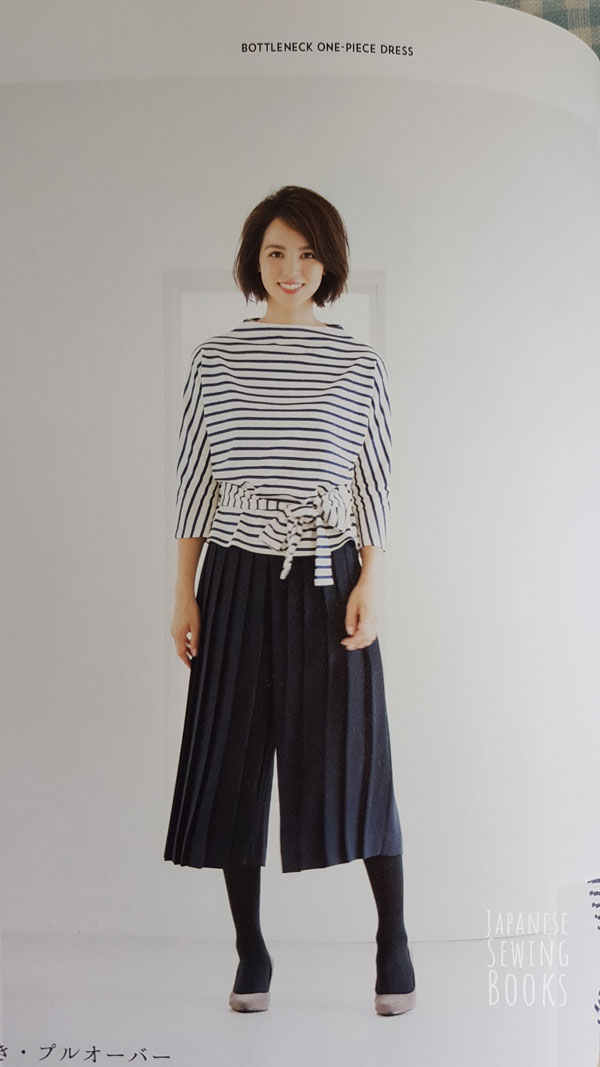



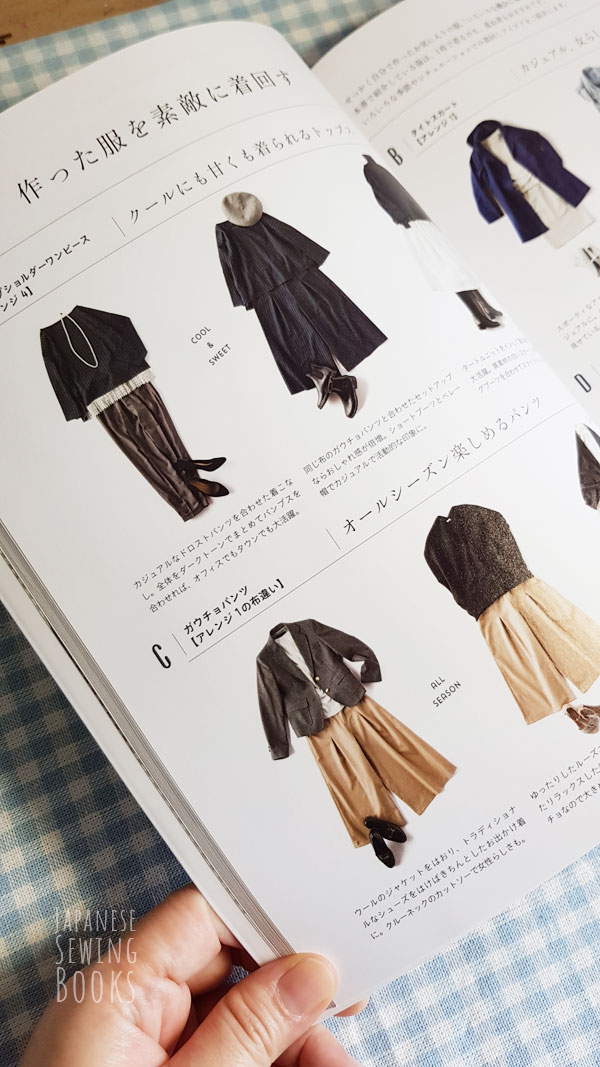




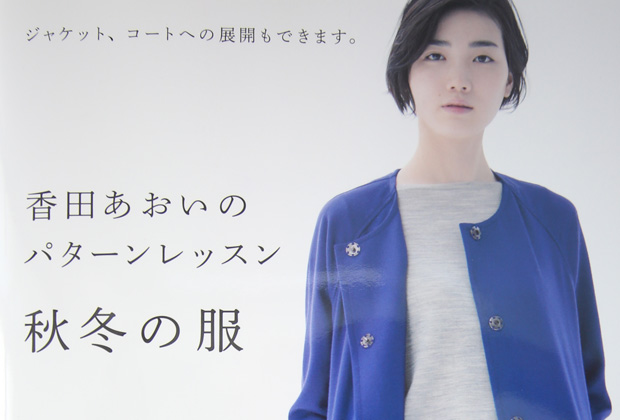
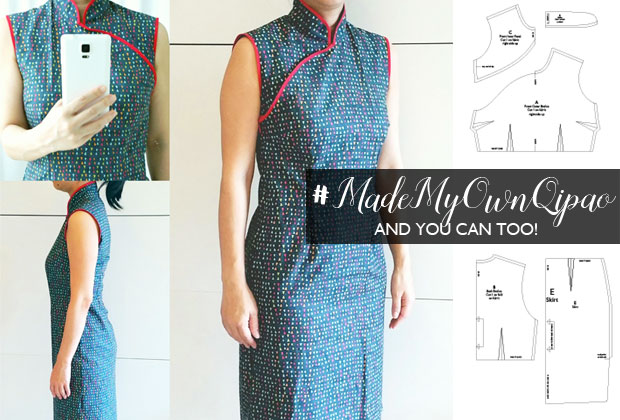

4 Comments
Thanks for the review. It looks like there are some nice designs, though I am not a fan of culottes either. I just wanted to mention that the Jalie website has an excellent video on how to sew knits without a serger (https://jalie.com/blog/video-tutorial-stretch-without-serger/). I used that technique before I got a serger and it usually worked quite well. I have often found it easier to sew knits (except the really stretchy lycra stuff) than wovens. It is possible that because the designs are not form-fitting, stretchy seams aren’t very necessary. Or, perhaps, they mostly use stable knits?
[…] wearing a top with this type of neckline! This looks quite similar to the top on the cover of her previous book but on closer inspection it is a different design altogether. In this case the sleeves are […]
Thank you for the review. I see lines on the pattern that look like a seam allowance. Do you know whether seam allowances are included?
Thanks!
Yes Seam allowances are included in all her books.